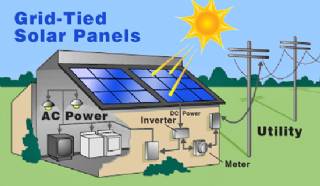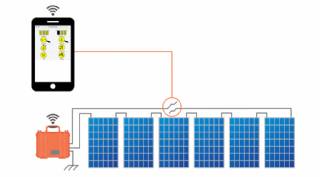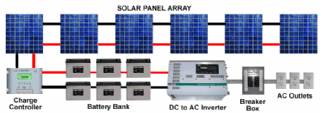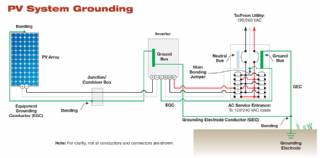Natural Gas Processing Plants Components and pretreatment of natural gas
Natural gas is valuable both as a clean source of energy and as a chemical feedstock. Before reaching the customer, it has to pass several processing steps. These steps are partly necessary to be able to transport the gas over long distances and partly necessary for the recovery of valuable components contained in the gas
Components of natural gas
Natural gas is a mixture of gases containing primarily hydrocarbon gases. It is colorless and odorless in its pure form. It is the cleanest fossil fuel with the lowest carbon dioxide emissions. Natural gas is an important fuel source as well as a major feedstock for fertilizers and petrochemicals.
Pretreatment of natural gas
Natural gas pretreatment typically consists of mercury removal, gas sweetening and drying. Natural gas is dried in molecular sieve adsorbers. Depending on the downstream processing steps and the concentration of the sour gas components, it may be necessary to remove H2S and CO2 from the natural gas. Scrubbing processes such as MDEA, Benfield or SULFINOL are offered for this service. Should only minor amounts of sour gas be present, they can be removed by adsorption along with the removal of water. Mercury guard beds are recommended to protect people and equipment.
Extraction of hydrocarbons and LPG plants
Due to their added value, heavier hydrocarbons are often extracted from natural gas and fractionated by using several tailor made processing steps.LPG Liquefied Petroleum Gas) is widely used as alternative fuel for cars, but is also suitable as a chemical feedstock. It consists of propane and butane (C3/C4).
NGL plants
NGL consists of ethane and heavier hydrocarbons (C2+) and constitutes an ideal feedstock for steam crackers producing olefins. It has a higher sales value compared to the pipeline gas itself, which justifies an extraction.
Extraction of non-hydrocarbons
Natural gas is a mixture of gases containing primarily hydrocarbon gases. It is colorless and odorless in its pure form. It is the cleanest fossil fuel with the lowest carbon dioxide emissions. Natural gas is an important fuel source as well as a major feedstock for fertilizers and petrochemicals.
Nitrogen rejection units (NRU)
Nitrogen is removed from natural gas to reduce transportation volumes and increase heating value. In some cases nitrogen rejection units are integrated within LNG plants to limit the nitrogen content in the fuel gas or to recover methane from tank return or end flash gas.
Helium recovery and liquefaction plants
Helium is a rare gas, which is recovered from natural gas when present in sufficient concentrations. Linde Engineering offers a well-proven cryogenic process for the recovery of high purity helium (> 99.999 %). High purity helium is used for special applications such as space technology or the realization of superconductivity.
Labels
Components and pretreatment of natural gasNatural gas plantsExtraction of hydrocarbons and LPG plantsNGL plantsExtraction of non hydrocarbonsNitrogen rejection unitsHelium recovery and liquefaction plantsFarming Principle: Deep Soil Preparation
Looking at GB as a three-legged stool, deep soil preparation is one of the legs. Deep soil preparation builds soil and soil structure by loosening the soil to a depth of 24 inches (60 cm). Ideal soil structure has both pore space for air and water to move freely and soil particles that hold together nicely.

Smart Home Ecosystem - Smart Home Automation - Smart Home Security - Smart Home Technology
The outer-most level corresponds to the individual devices and sensors that consumers interact with. Several candidates are vying for the role of a leader introducing smart home services to the mass market.

Solar Energy Systems - Solar Modules - Solar Electric System Design - Solar Power
The heart of a photovoltaic system is the solar module. Many photovoltaic cells are wired together by the manufacturer to produce a solar module. When installed at a site, solar modules are wired together in series to form strings. Strings of modules are connected in parallel to form an array.
Solar Energy Systems - Array Mounting Racks - Solar Ray - Solar Panel - PV Racks and Mounts
Arrays are most commonly mounted on roofs or on steel poles set in concrete. In certain applications, they may be mounted at ground level or on building walls. Solar modules can also be mounted to serve as part or all of a shade structure such as a patio cover. On roof-mounted systems, the PV array is typically mounted on fixed racks, parallel to t

Solar Energy Systems - Grounding Equipment
Grounding equipment provides a well-defined, low-resistance path from your system to the ground to protect your system from current surges from lightning strikes or equipment malfunctions. Grounding also stabilizes voltages and provides a common reference point. The grounding harness is usually located on the roof.

Solar Energy Systems - Solar Inverter - Solar Panel Inverter
Most grid-connected inverters can be installed outdoors, while most off-grid inverters are not weatherproof. There are essentially two types of grid-interactive inverters: those designed for use with batteries and those designed for a system without batteries.

Solar Energy Systems - Solar Disconnects
Automatic and manual safety disconnects protect the wiring and components from power surges and other equipment malfunctions. They also ensure the system can be safely shut down and system components can be removed for maintenance and repair.

Solar Energy Systems - Solar Battery Bank
Batteries store direct current electrical energy for later use. This energy storage comes at a cost, however, since batteries reduce the efficiency and output of the PV system, typically by about 10 percent for lead-acid batteries. Batteries also increase the complexity and cost of the system.

Solar Energy Systems - Solar Charge Controller
A charge controller, sometimes referred to as a photovoltaic controller or battery charger, is only necessary in systems with battery back-up. The primary function of a charge controller is to prevent overcharging of the batteries. Most also include a lowvoltage disconnect that prevents over-discharging batteries. In addition, charge controllers pr

Solar Energy Systems - The NEC and PV Systems
Solar PV systems must be installed in accordance with Article 690 of the National Electric Code, which specifically deals with PV systems, as well as several other articles of the NEC that pertain to electrical systems in general. When there is a conflict between NEC 690 and any other article, NEC 690 takes precedence due to the unique nature of PV